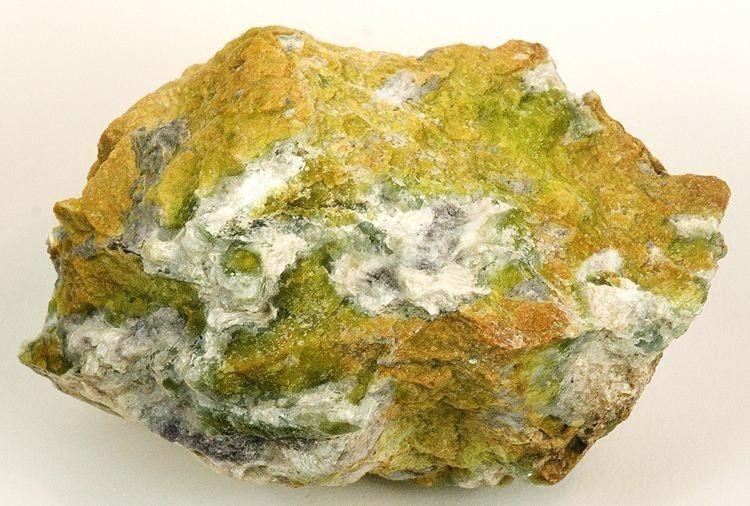Category Carbonate mineral Strunz classification 5.DA.50 | Formula(repeating unit) Mg6Al2CO3(OH)16·4(H2O) Space group R3m | |
 | ||
Crystal system 3R polytype: Trigonal2H polytype: Hexagonal Crystal class 3R polytype: Hexagonal scalenohedral (3m)H-M symbol: (3 2/m)2H polytype: Dihexagonal dipyramidal (6/mmm) | ||
Hydrotalcite is a layered double hydroxide of general formula Mg
6Al
2CO
3(OH)
16·4(H
2O), whose name is derived from its resemblance with talc and its high water content. The layers of the structure stack in multiple ways, to produce a 3-layer rhombohedral structure (3R Polytype), or a 2-layer hexagonal structure (2H polytype) formerly known as manasseite. The two polytypes are often intergrown. The carbonate anions that lie between the structural layers are weakly bound, so hydrotalcite has anion exchange capabilities.
Contents
It was first described in 1842 for an occurrence in a serpentine - magnesite deposit in Snarum, Modum, Buskerud, Norway. It occurs as an alteration mineral in serpentinite in association with serpentine, dolomite and hematite.
Nuclear fuel reprocessing
Hydrotalcite has been studied as potential getter for iodide in order to scavenge the long-lived 129I (T1/2 = 15.7 million years) and also other fission products such as 79Se (T1/2 = 295 000 years) and 99Tc, (T1/2 = 211 000 years) present in spent nuclear fuel to be disposed under oxidising conditions in volcanic tuff at the Yucca Mountain nuclear waste repository. Carbonate easily replaces iodide in its interlayer. Another difficulty arising in the quest of an iodide getter for radioactive waste is the long-term stability of the sequestrant that must survive over geological time scales.
Anion exchange
Layered double hydroxides are well known for their anion exchange properties.
Medical
Hydrotalcite is also used as an antacid.
Wastewater treatment
Treating wastewater by creating hydrotalcites produces less sludge than lime. In one test, final sludge reductions reached up to 90 percent. This alters the concentration of magnesium and aluminum and raises the pH of the water. As the crystals form, they trap other waste substances including radium, rare earths, anions and transition metals. The resulting mixture can be removed via centrifuge.
